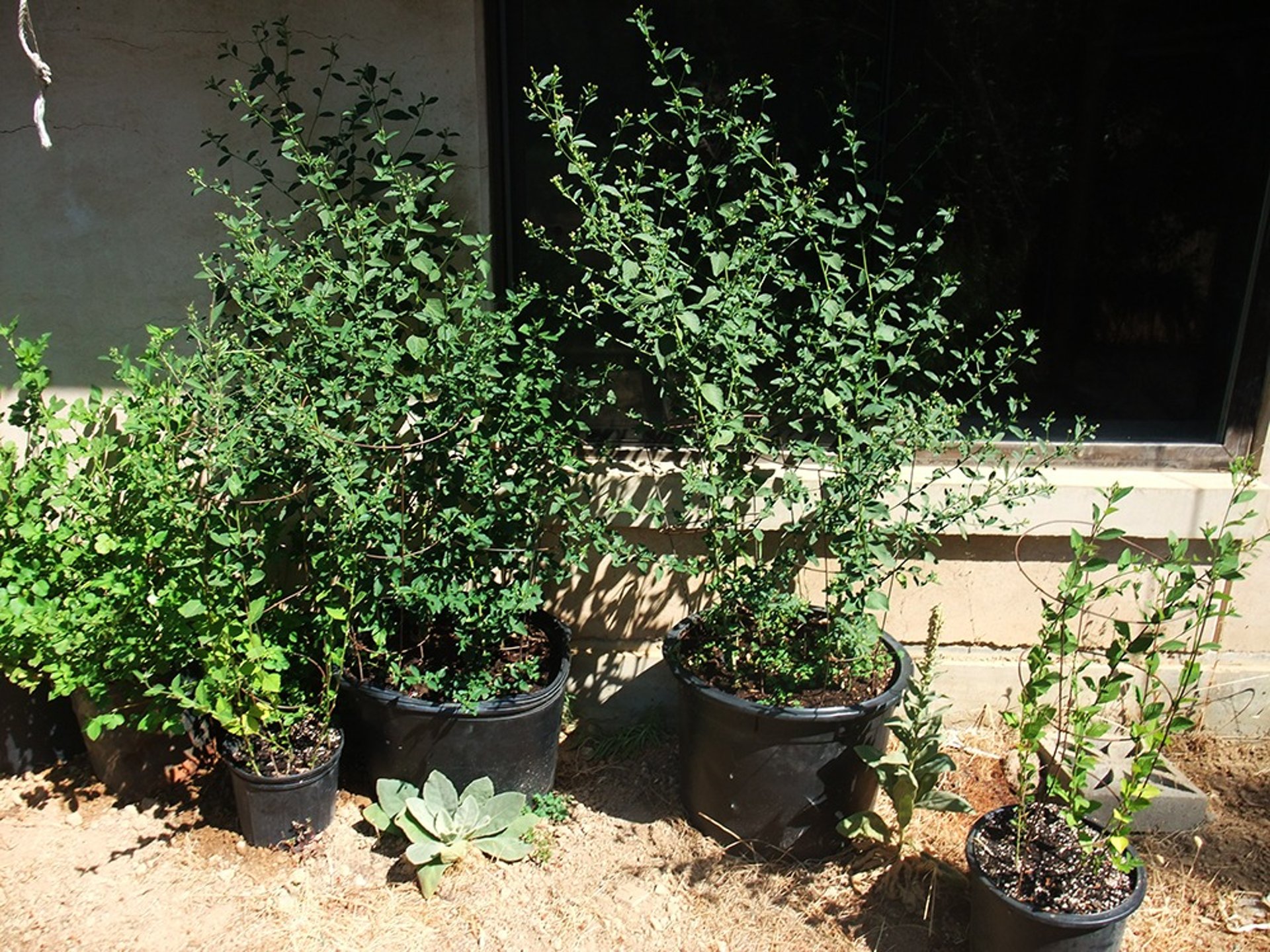
Healing Knowledge
Explore our books on medicinal herbs today.
Books To Save Your Health
Sida acuta, Sida cordifolia, Sida rhombifolia, Etc....
Gardening Resources
The Bidet
paperback, 563 pages, 809 citations, 2018 $39.99 Amazon press, ISBN-13: 978-09748799
A User’s Guide to Sida acuta, Sida cordifolia, and Sida rhombifolia:
paperback, 48 pages, 2019 $6.50 Amazon press, ISBN-13 : 978-1717406880 based on the findings of the big book
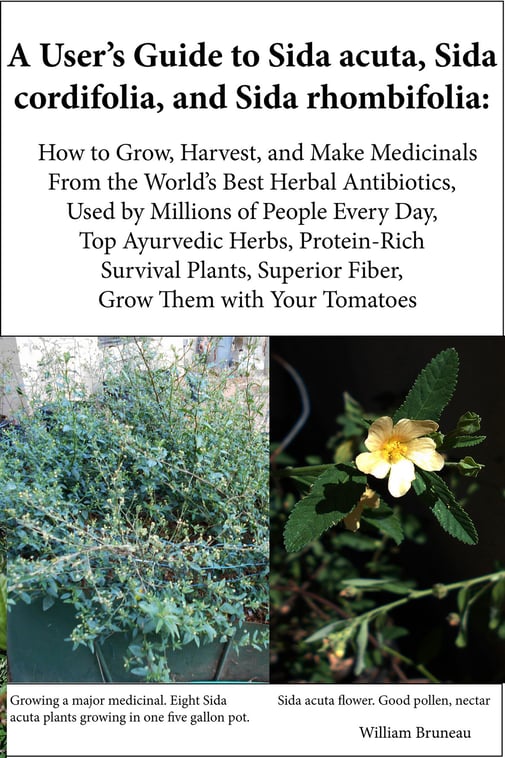

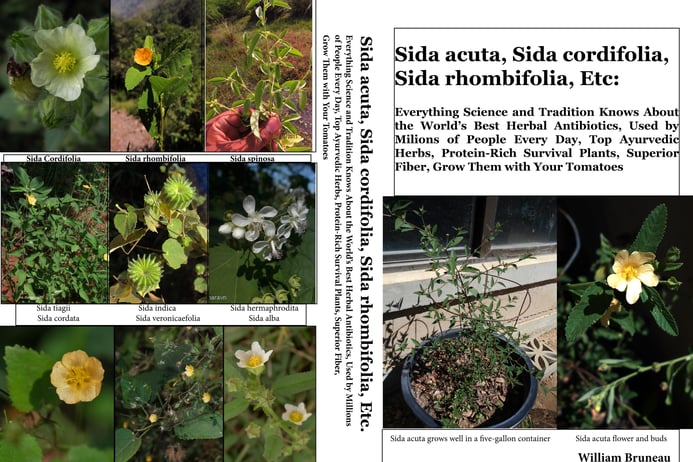

Amazon 5 stars "Who knew the Power of the Sida Plant Family?" Reviewed July 30, 2022 Verified Purchase I'm now growing Sida Acuta and obtained 3 plants and a seed packet from Horizon Herbs. It tastes great and is like eating a potent, natural antibiotic daily. This book addresses studies related to the healing and prevention properties of the Sida herb family. The smaller book by William Bruneau speaks to benefits which is all most people are interested in but this does a deep dive into the research that supports the herb family's benefits. The plants are doing great. I will dry them and put them in glass jars for winter tea.
Amazon 5 stars ... "User's Guide is full of information for using this amazing herb for a variety of problems" Reviewed May 22, 2018 Verified purchase This little User's Guide is full of information for using this amazing herb for a variety of problems! As Bill Bruneau says, " Antibiotic resistance is growing exponentially." I will grow Sida and have it at the ready!


The Bidet
paperback, 202 pages, 2004-2020 $9.95 Amazon Press Second Edition ISBN: 9781693610936
Fifteen years ago my first edition of The Bidet was the first book on that topic, ever. It was the first book, and probably the first publication on the bidet ever in our Library of Congress. It became known in the bidet biz as “the bidet bible” for the completeness of its information and the available peer-review research. It also featured personal, scatological, and humorous anecdotes about the bidet, and how we relate to it.
This second edition has evolved into two compelling books: the first book is still about bidets, their health benefits, medical benefits, and their sheer enjoyment and cleanliness. I have even managed to expand on its bidet humor. The second half of this book is a critique and condemnation of our current method of processing our bodily wastes, particularly with TP. We have a slow, creeping TP crisis where an unsustainable number of trees are being cut down just to smear our butts.
Everything There Is To Know From The First and Only Book On The Bidet An Elegant Solution for Comfort, Health, Happiness, Ecology, and Economy
Naturally Grown Medicinal Seed
These seeds were grown in my own garden for my own personal health. Tinctures and teas are very good tasting. They are a good potherb addition to any soup or stew. These seeds were naturally grown without the use of chemicals.
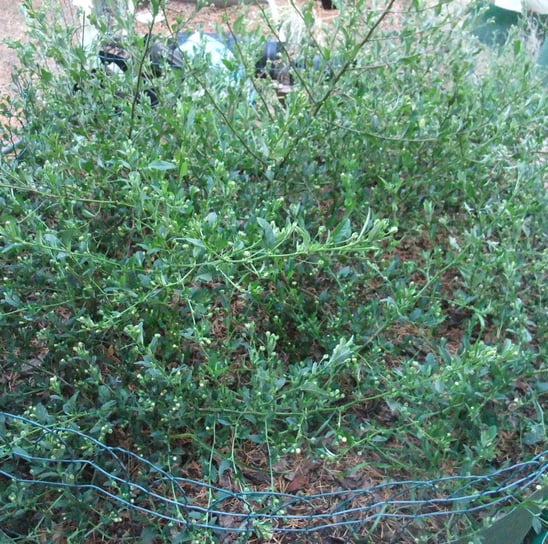

Healthy Solutions
Trusted Quality
These seeds are weeds. They are very easy to start from seed and need little cultivation. They are surface germinating and should be started with less than 3 mm of soil above them. Sida acuta likes to be fertilized, while Bidens pilosa is indifferent to fertilization. Bidens needs its own bed; it will poison the soil for other plants [but the soil toxin is water soluble].
Sida acuta growing in a bed
Bidens pilosa
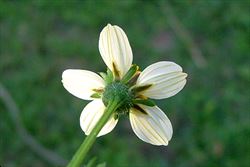

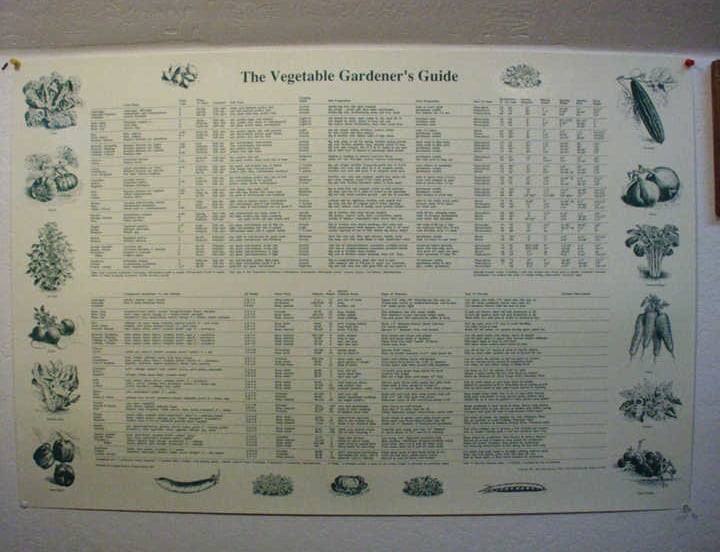

This poster contains all the information needed to successfully grow all major vegetables
The Vegetable Gardener's Guide Poster
The Vegetable Gardener's Guide poster content
Name - as in the common garden name. Usually all of one vegetable is grown the same way, but not always. For example, Cabbage covers regular cabbage, savoy cabbage, and collards. Chinese cabbage is an exception - there is enough difference in cultivation that we give it a separate listing. Latin Name - Latin names can be a pain, but they are excellent for exactly describing what you are talking about. Helpful when talking with gardening professionals, your ag extension agent, etc. Plant Type - as in "is it an annual, perennial, biennial?" Kind of important to know for garden planning, whether to pull it up at the end of the season, and for growing for seed. A = annual, B = biennial, P = perennial. Exceptions: A(B) = actually a biennial, but usually treated as an annual, A,B = some varieties are treated both as an annual and biennial (Swiss Chard is a biennial, and I prefer the taste of the leaves the second year, but it is usually grown as an annual), A(P)= tender perennial, perennial grown as an annual, P,A = some varieties are treated both as an annual and perennial When to Plant - The season or seasons in which it is best to plant each variety. Some have a very narrow window of opportunity for the best results, others can be started anytime in the growing season. If you have a very challenging climate, you will have to adjust these recommendations for your climate (if winter starts with snow November 1, planting anything the week before isn't a good idea): EaSp = early spring, as soon as the soil can be worked; Sp = spring, after all danger of frost is past; LaSp = late Spring, soil has warmed to 70-80 degrees; EaSu = early summer, can take some cool; Su = summer, plant in full heat; LaSu = late summer, plant as close to the end of the hot season as possible; Fa = fall, get established before first hard frosts Soil Type - Generally describes the range of soils that the veggie will grow in, plus peferred soil. Any = any good garden soil; OM = likes lots of organic matter, the living part of the soil, made up of decayed plant and animal matter; Ca = Calcium; Mg= Magnesium; NPK = three basic plant fertilizers: N = Nitrogen, P = Phosphorous, K = Potassium (potash); Loam = excellent, friable soil composed of clay, silt, sand, and organic matter. Should be half solid matter, and half space; Sandy = sand loam, comprised of more than half sand. Has characteristics much like sand. Its structure is loose and slightly heavy; Clay = clay loam, with more clay than average, but not yet heavy and clinging. Good sustained source of minerals for greedy feeders; Loose = structure is half air or more, either naturally or because it's been dug and broken up. Often essential for optimum root growth; Light = soil that is quite loose while having a lot of OM in it, ideal for root crops that need excellent nutrition. Exposure (Location) - How much of the day's sun does the plant need? Some plants need full sun to thrive, others will wilt without some shade. Those with extremely cool or hot climates must adjust these recommendations. Full = plant where there is sun pretty much throughout the day; Part = prefers some shade during the course of the day; Full,Part = prefers full sun but part shade is ok, or in very hot climates needs partial shade; Part, Full = prefers part sun but can tolerate full sun if not too hot Feeding Habit - How much nutrient does it consume? Ranges from very greedy feeders that drain the soil of a lot of nutrients to light feeders which need minimal fertilization. We specially note leguminous varieties that add Nitrogen to the soil. If you are harvesting lots of produce, then even the lightest feeder will drain the soil, because the veggie was basically created from your soil: Very Greedy = puts a real drain on the soil. Fertilize the soil well before planting. Side-dress fertilizer or foliar spray regularly during growth, Greedy = soil should be well fertilized before and rested/rotated after this crop, Moderate = needs fertilization but does not greatly exhaust the soil; Light = takes little out of the soil, or adds to the soil. May not need fertilization if the soil is in good shape, +N = adds Nitrogen to the soil Bed Preparation - Describes how to prepare the soil for this plant. Nearly all plants benefit from soil that has been dug deeply, has good organic matter content, and a good supply of all soil nutrients. Seed Preparation - Some seeds need special procedures in order to germinate well. Many seeds need to soak in water to soften hard coatings. Germinates readily = doesn't need any special handling before planting it. How To Start - The best way to grow from seed: Flats = best to get an early start on the season by starting the seeds indoors in flats, and then transplanting into the garden; Pots = doesn't transplant well, but individual peat/paper pots often work; Direct = plant directly into the spot in the garden where it will be growing; Starts = very difficult or impossible to start from seed. Start with already growing plants from the nursery Germination Percentage - Minimum percentage of seeds that should germinate. na = doesn't start from seed. Germination Air Temperature - A safe minimum air temperature that is best to start plants at. You can often start at somewhat colder temperatures, but it is risky. The soil temperature can be somewhat colder than this, but this often stunts growth. * to produce seed, these plants need 1-2 months of chilling temperatures (less than 45°) Spacing Overview - There are two methods of spacing your plants:Row planting is in lines and rows (Spacing Row, Spacing Width); and Biointensive planting is on generally closer hexagonal spacing. Spacing, Initial - is used by both: the initial spacing in rows in Row planting, and in Biointensive for the seed spacing in flats and pots. Abbreviations: B = Bush; P =Pole; T = Trailing, vining ; L= leaf type; H = head type; M = can be grown in 1-1.5 foot mounds, with 3-6 seeds planted in a circle. Use row spacing between mounds Spacing, Biointensive - Hexagonal spacing based on the high-yield biointensive method. In the biointensive method most plants are started in flats (using the Initial Spacing), and then transplanted to this spacing. This eliminates the need for subsequent thinning. For plants to thrive at this closer spacing, the soil needs the additional methods of the Grow Biointensive method, such as special, deeper digging and companion planting. For more information on this method visit the Bountiful Gardens website. or abbreviations, see Spacing Overview. Spacing Width - When planting in row culture, this is the linear spacing between the plants as you plant them in a line. M = Many row gardeners plant in mounds, use this spacing between plants in the mound. Spacing Row - In row culture, the spacing between the planted lines of seeds. Generally a wider spacing. Spacing, Initial - Row Culture - Seeds are planted at this spacing then thinned to their Spacing Width. Since a percentage of seeds will usually not germinate, this spacing insures that you have more than enough plants started to end up with a full garden crop. Any excess sprouts will be pulled out of the bed (thinned); Grow Biointensive - use this spacing to start seeds in flats or pots, then transplant. If there are two numbers, plant your seeds to the closer spacing, then later thin to the second after seeds have sprouted. Once plants are well established, thin to the appropriate final spacing. na = just plant at its final spacing. Seed Depth - How deep to plant the seed in soil for best results. In inches. Companions, Beneficials and Enemies - Many gardeners from time out of mind have felt that their plants do better when growing around certain plants, and do worse around others. Companions are listed for each vegetable. Companions = does better growing around these plants; ! = particularly strong companion; * = beneficial, helps keep bugs and/or diseases away. Many aromatic herbs are universally beneficial.
E = enemies, presence of this plant inhibits growth and productivity. pH Range - The range of acidity or alkalinity in which a plant will thrive. It is generally important to keep your plants within this pH range when conventional row gardening. Organic and biointensive gardeners don't generally find this as critical, as the greater fertility and the biological balance of their soil allows a greater pH range. Water Need - How much water does it need? Correct water is needed - too little and the plant dries up, too much and it is susceptible to rotting and/or disease: Keep Moist = keep the soil pretty constantly moist; Constant = water twice a day, hard to water too much; Keep Watered = water daily, twice on hot days; Periodic = do not let the soil dry out too much; Occasional = water every few days, more in very dry weather Matures - How many days after germination before the plant begins to bear produce. If there are two figures, the first is for greens or green fruit, the second is for seeds or dry/mature fruit. # Plants - A reasonable number of plants to grow for one person's needs. If you really like a vegetable, you should plant more. S = plant in succession, so that you always have this amount ripening. When half mature, plant this number again, then replant this number after harvesting the first crop, and so on. Special Cultural Needs - Most plants have something special that they need in order to perform well. Please Note: Greedy and Very Greedy feeders need additional fertilization. Poisonous Plant: Caution - all parts of these plants except fruit are poisonous. Keep these plants out of reach of children. How To Harvest - Either how to physically harvest your produce, or how to proceed to maximize the quantity of your harvest. Signs of Ripeness - What to look for in mature produce when it's time to harvest. Either how to physically harvest your produce, or how to proceed to maximize the quantity of your harvest. General Abbreviations - N = Nitrogen; K = Potassium; Ca = Calcium; Mg = Magnesium; P = the most confusing abbreviation is P, which depending on its context means: perennial, pole (climbing plant), or Phosphorous. We have tried to keep this clear in each case.
OM = organic matter (usually compost), the living part of the soil, made up of decomposed plant and animal matter.
Side Dress (fertilizer) = gently dig in fertilizer near the sides of plants while growing, generally once or twice during growth.
Foliar Spray = Liquid fertilizer that is applied directly to the leaves of plants


Seeds To Grow
At present I am offering two seeds for sale: Sida acuta and Bidens pilosa. They have been grown in my personal garden for my own health needs. They are notorious weeds in the tropics but cannot survive our mild Mendocino winters. They are very easy to start and grow. Both a prolific producers of seed. Each produced 3 gallons of tincture and 3 gallons of tea in only 50 square feet of garden space.
The great medicinal herbalist Stephen Buhner puts it thus, "The importance of systemic herbal antibacterials cannot be overstated. Many resistant diseases, such as staph, are widely spread throughout the body. They can affect internal organs, invade difficult-to-reach parts of the body, or, very commonly, infect the skin (from the inside rather than outside), appearing as skin ulcerations in various locations. To treat a systemic infection like staph, an herbal antibiotic that is systemically spread throughout the body is necessary." Both of these herbs treat all staph, including MRSA.
The tincture and the hot-water extract of these herbs are the strongest medicinal forms for internal use. I use them internally to prohibit infection, topically for any skin condition, and the tea as a very effective nasal wash The plant can be prepared as powder, capsules, hot tea, or alcohol tincture. Most people use the leaves. Both are pleasantly tasteless and can be included in nearly any food you are preparing. Grown naturally without the use of chemicals. Both species have 24 seeds per packet
Sida should be grown as an annual; as a perennial its tap root is extremely difficult to remove, and it becomes very hard and woody and very difficult to control. My "great discovery" was that grown as a tender annual it is fully medicinal, so I strongly advise you to replant it every year. The great Stephen Buhner said of its tincture, "I have not eaten sida, but the tincture is delicious, one of the few that delights the tongue."
Worldwide Bidens pilosa is notorious for its bad taste, but my particular variety is very mild and pleasant tasting. It is a prolific producer and can be "cut-and-come-again" up to six times a season. Bidens is allelopathic, which means it produces a substance that inhibits other plant's ability to grow near it. This inhibition takes a year or two to disappear from the soil. Best to give it its own garden bed.
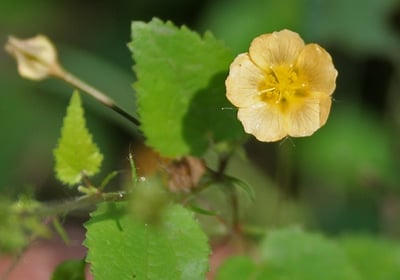

Gallery
Pictures of profoundly medicinal plants. We currently offer Sida acuta seed and Bidens pilosa seed for sale. Elsewhere we offer two books on the benefits of genus Sida.
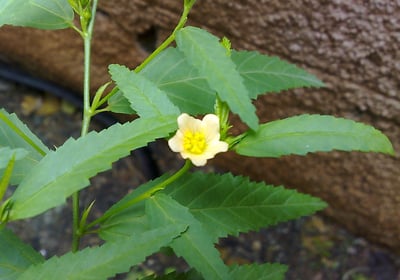

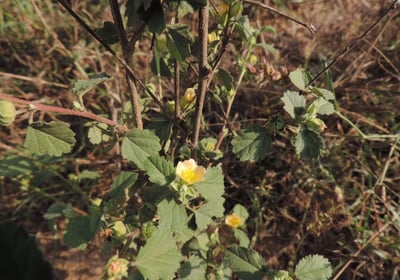

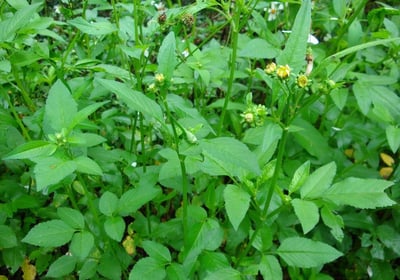

Sida acuta plant with flower
Sida cordifolia plant with flower
Small Sida Rhombifolia plant with flowers
Patch of Bidens pilosa plants with flowers
contact us
www.bbruneau@bbruneau.com
+1 707 459 3390
© 2025. All rights reserved.
We are very serious about your privacy. Unless required by law, we will never disclose your personal information to anyone else.
